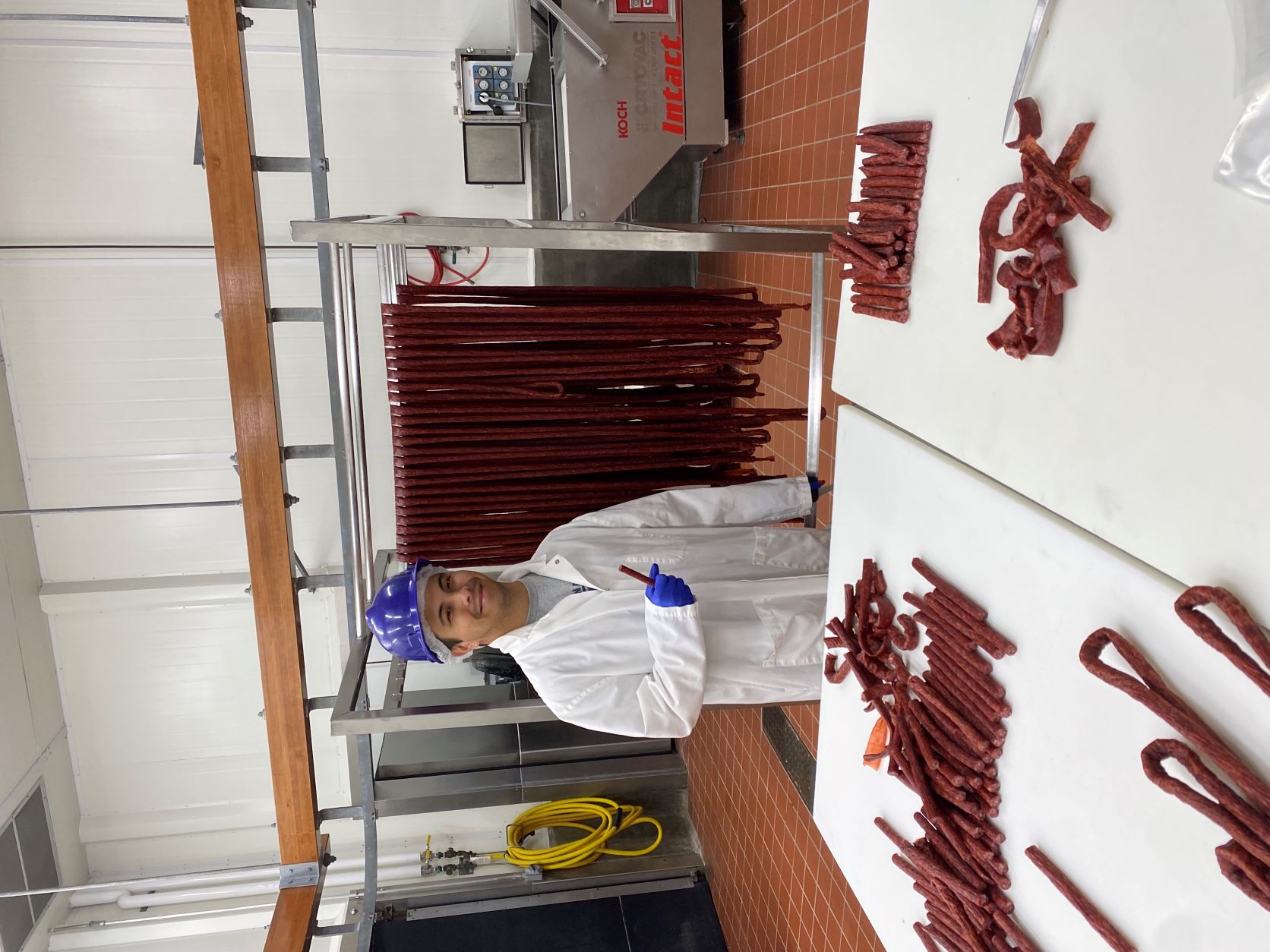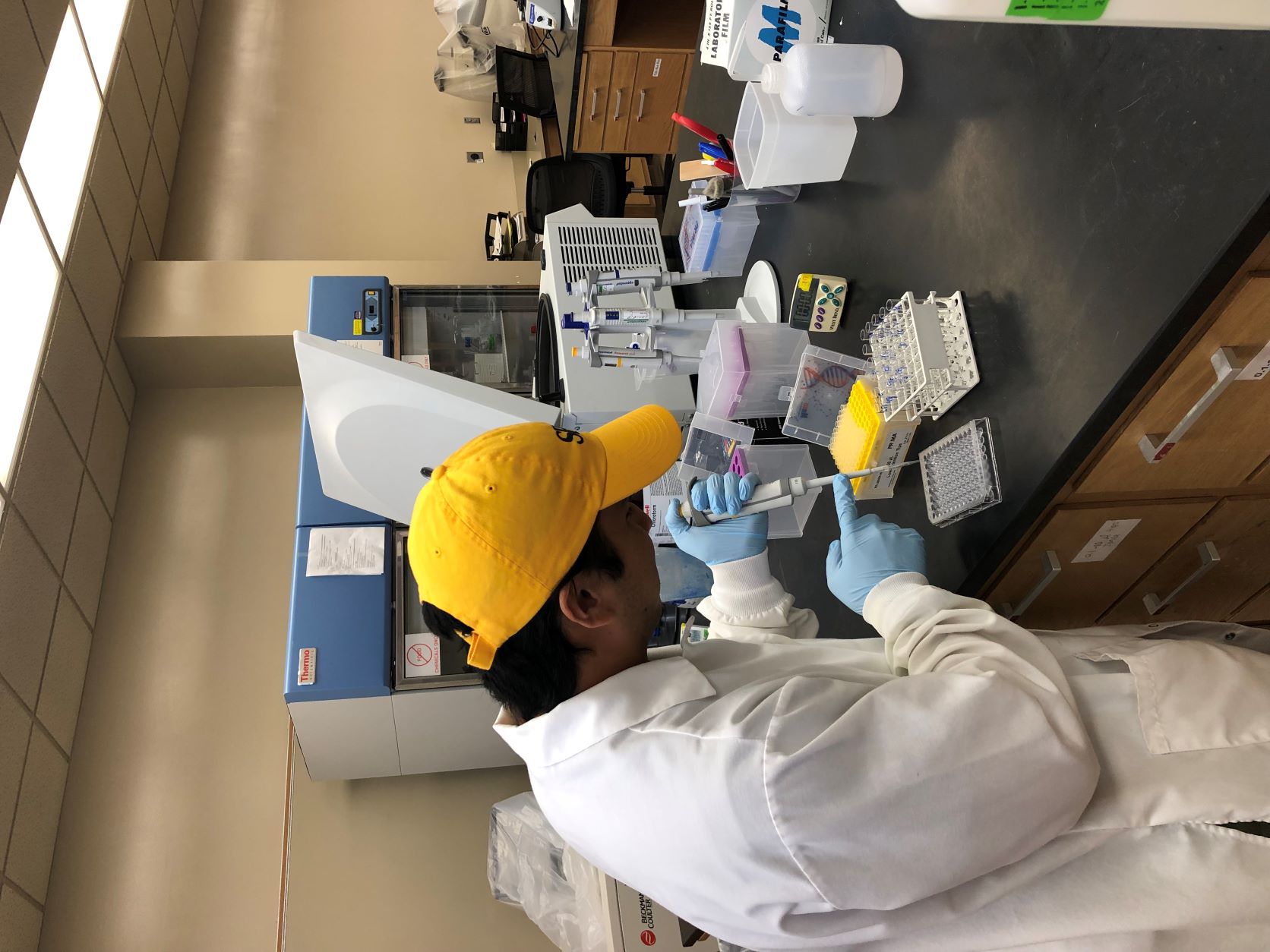From Hawaii to K-State; Colin Chun works to improve meat shelf-life
Colin Chun is from Aiea, Oahu, Hawaii. He graduated in the summer of 2022 from K-State with a Master of Science in animal science, with a focus on meat science.
What led Chun all the way to Kansas State University from Hawaii?
Two of the most influential people in Chun’s life are also former Wildcats. His grandparents, Raymond and Sachiko “Sandy” Chun were also born and raised in Hawaii and graduated from K-State in 1957 and 1954 with degrees in engineering and home economics.
Growing up, Chun recalls having a close relationship with his “goonggoong” — a Chinese word for grandfather. He even thinks that’s the person from whom he gets some of his personality and character traits, particularly being more reserved and thinking before he acts or speaks.
Following in his grandparents’ footsteps to attend K-State was not a small thing in Chun’s eyes.
“I had never lived in the mainland until college. I thought it was a pretty big step for my life and it’s something I’m proud of,” he said.

Chun’s initial intention was to get a pre-veterinary degree from K-State, but after a few semesters and spending some time shadowing large animal veterinarians in Colorado it became something he no longer saw himself doing.
As a sophomore, Chun started working in the meat science and muscle biology labs and grew more interested. He began his own research for the first time during his junior year with a project under Michael Chao, assistant professor of animal sciences and industry. He enjoyed the work and research so much that he decided to stay at K-State to get his master’s degree under Chao’s supervision.
While in graduate school, Chun worked on a project supported by the K-State Global Food Systems Seed Grant Program. The project investigated lipid oxidation in steak that is caused by a phospholipid called phospholipase A2, or PLA2, and whether an antibody would inhibit that process.
Lipid oxidation is what causes the color of meat to turn brown. Consumers are less likely to buy meat that has changed in color, which results in meat not selling and sometimes it must be discarded or repurposed for other meat products. The issues then become improving shelf-life and eliminating food waste.
The results of the research revealed that the antibody did not show much inhibition to the actions of PLA2.
“Unfortunately that’s not what we wanted to see, but no data is still data,” Chun said. “It was a little disheartening because you put in all the time and effort to see the results you want to see, but that’s research and that stuff happens. You have to move onto the next step, which for me would be asking ‘Why didn’t it work?’ Then reading and studying why it didn’t work.”
While the change in color of meat can turn customers away, it may be more of a visual issue rather than one of safety or flavor of the meat.
“Color change is not an indication of spoilage,” Chun said. “It doesn’t necessarily mean it’s bad. It might have some slight change in flavor, but it’s not going to be significantly changed as long as you cook it within a few days.”
Often meat that has changed in color will be reduced in price. Chun says he likes to shop for meat that is reduced in price since the quality and flavor of the meat is not significantly affected but the price is cheaper.
As for Chun’s personal favorite cut of meat?
“If I had to pick a steak it would be a ribeye,” he said. “Specifically, the cap of the ribeye that goes around it. If that cap is big, I’ll typically buy that one piece of steak just because I think that’s the most flavorful part of any cattle.”
 Being in the animal science department also gave Chun the opportunity to build relationships with some of his professors. He went fishing with Professor David Grieger and Chao several times, especially ice fishing in the winter. The three of them even got together to eat the fish they caught. Chao also introduced him to hunting and they would make jerky and snack sticks out of the deer they hunted.
Being in the animal science department also gave Chun the opportunity to build relationships with some of his professors. He went fishing with Professor David Grieger and Chao several times, especially ice fishing in the winter. The three of them even got together to eat the fish they caught. Chao also introduced him to hunting and they would make jerky and snack sticks out of the deer they hunted.
Chun moved to San Antonio, Texas this summer and is currently looking for jobs either in meat manufacturing with production or quality assurance or working in a food safety lab.
All in all, the switch to studying meat science turned out to be a great fit for Chun.